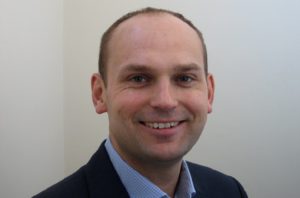What next for the funding of supported housing? As the sector awaits the outcome of a government inquiry, Simon Ketteridge, Riverside Care and Support’s Director of Business Development, considers the challenges that lie ahead…

Every year, we support 16,000 customers in more than 300 homelessness and Retirement Living services across the country.
Many of these services have been providing vital support to rough sleepers and people at risk of losing their home since the 1920s. The founders of these services mobilised the support of their local communities to respond to the needs of local people.
Skip forward almost 100 years and a question mark continues to hang over the future of such housing and support, which has been the subject of a detailed government consultation.
The proposed model and direction of travel towards a system built on Local Housing Allowance (LHA) rates and Universal Credit risks placing some very perverse incentives on providers – firstly not to develop and operate in areas with some of the highest need (and the lowest LHA rates). And then, secondly, to prioritise customers who are more likely to stay long enough to get their Universal Credit claim processed – rather than those who need a bed the most.
‘Supported housing’ is perhaps a limiting term, often conjuring up some unhelpful assumptions not reflective of the breadth and partnership nature of many services. While the current uncertainty has resulted in stalled developments and challenges for the sector, it has at least created an opportunity to engage people at all levels of government, helping them to get to grips with the impact of these services.
Throughout the inquiry MPs have questioned and challenged using LHA as the most appropriate building block for the new funding system. But throughout the final inquiry session (on March 28) ministers stuck to their guns, promising that more detail would be published in a Green Paper in ‘late spring’.
The Select Committees conducting the inquiry are currently reviewing all the submissions as well as the oral evidence it heard, including from Riverside. The outcome of the inquiry will surely be important in influencing ministers, and their departments, when they are producing the Green Paper.
‘Top-up funding’ (the term used throughout the consultation) might suggest that this is extra or new money for local authorities – when this is actually about moving around £2bn of existing expenditure from Housing Benefit (a system based on national entitlement) into limited budgets to be administered by local authorities.
Providers across the country are generally supportive of any opportunities for more joined up commissioning to meet local need. However, there is a genuine and legitimate concern, based on experiences of the former Supporting People funding system, that local authorities will draw on this money to meet their statutory duties. There will inevitably be conflicting priorities and tough choices for local authorities – even within a ring-fenced pot.
The regional difference in LHA rates, ranging from £70 to £260 per week, means that in large parts of the country personal entitlement capped to LHA levels is a real threat to the long-term viability of supported housing schemes and services. Riverside has provided evidence to the inquiry demonstrating that the demand for supported housing is greater in areas where the LHA rate is lower and, vice versa: where the LHA rate is high, need is generally less.
At the final inquiry session last month there were a number of references to the benefits of supported housing, with recognition from ministers of its importance in engaging with some of the most socially excluded people in our society. Marcus Jones MP referred to Department for Communities and Local Government analysis, estimating the net annual benefit of providing supported housing at £3.53 billion per year.
During that final session, Caroline Nokes MP referred to 2019 being a ‘shadow year’ for the new funding arrangements. Whatever happens, any new system must take full account of the regional variation in LHA rates and must be introduced with genuine care for the sector, more than 700,000 customers nationwide, and the communities in which they live.